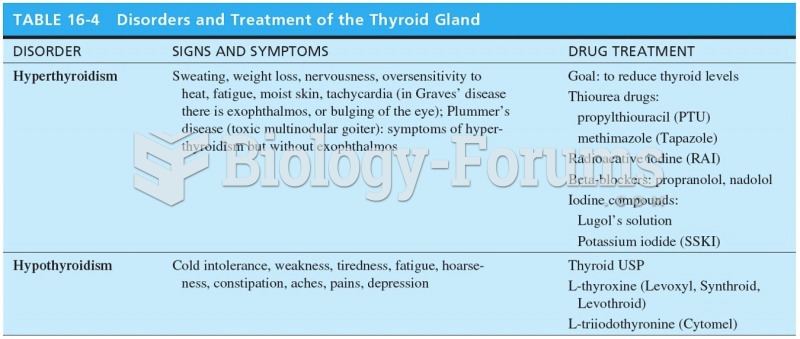|
|
|
Eating carrots will improve your eyesight. Carrots are high in vitamin A (retinol), which is essential for good vision. It can also be found in milk, cheese, egg yolks, and liver.
Human stomach acid is strong enough to dissolve small pieces of metal such as razor blades or staples.
Signs of depression include feeling sad most of the time for 2 weeks or longer; loss of interest in things normally enjoyed; lack of energy; sleep and appetite disturbances; weight changes; feelings of hopelessness, helplessness, or worthlessness; an inability to make decisions; and thoughts of death and suicide.
In 1844, Charles Goodyear obtained the first patent for a rubber condom.
In the United States, there is a birth every 8 seconds, according to the U.S. Census Bureau's Population Clock.







